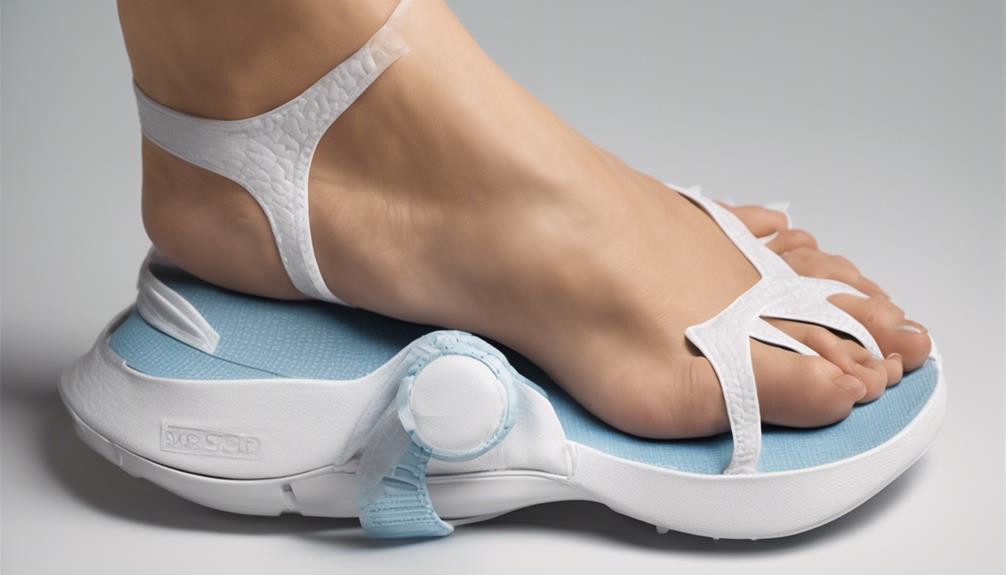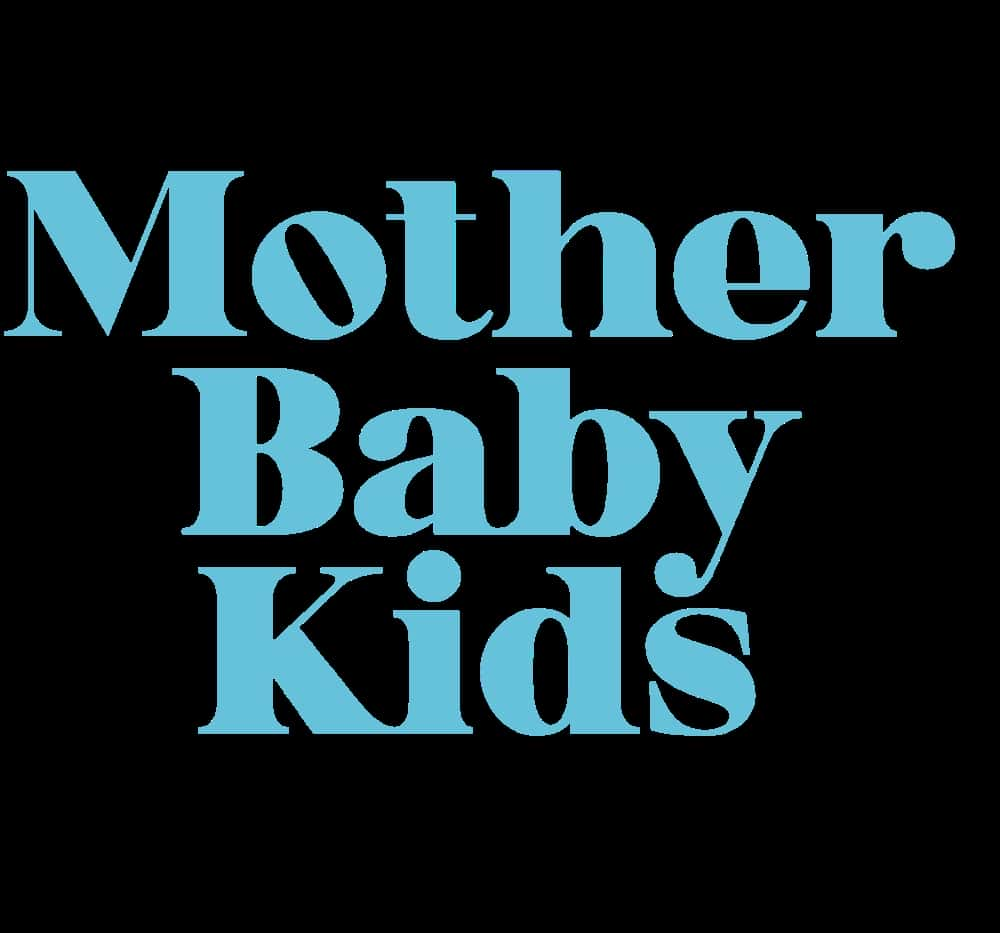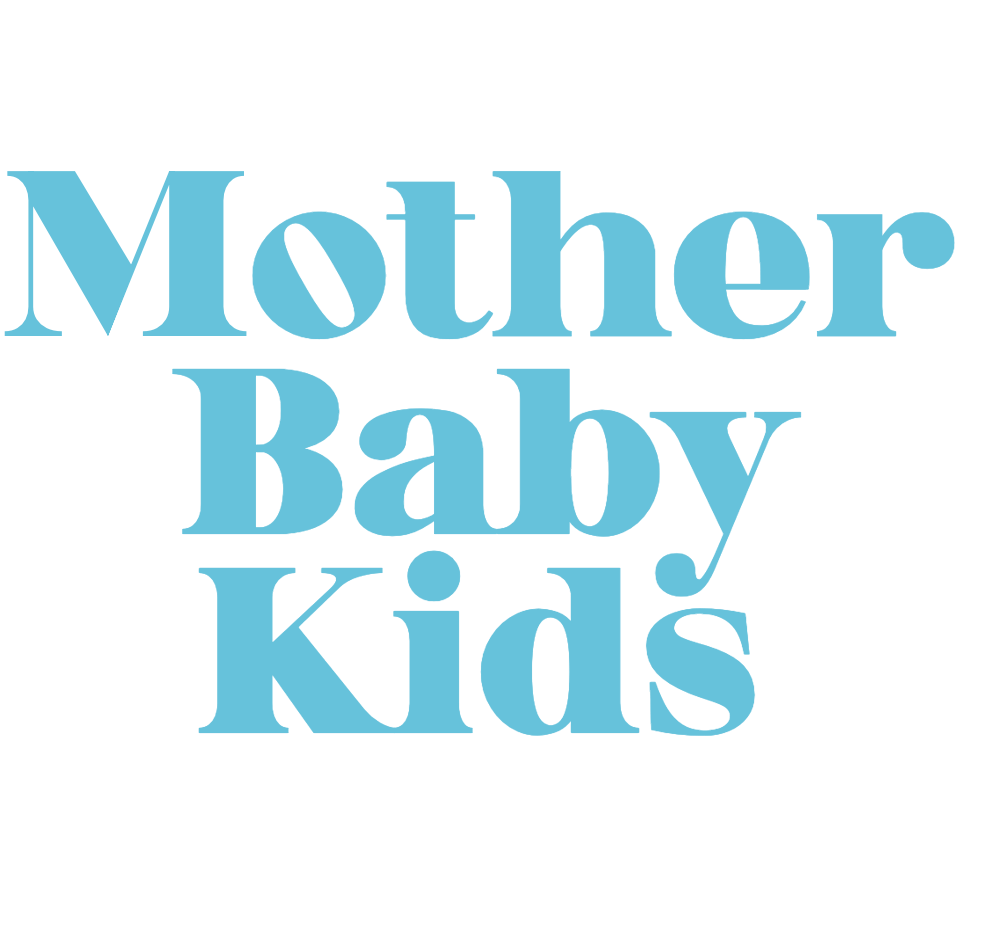Third Trimester
Why Does Third Trimester Morning Sickness Occur?
Curious about why morning sickness strikes in the third trimester? Explore the surprising reasons behind this phenomenon for expectant parents.

Experiencing morning sickness in the third trimester can be a source of confusion for many expecting parents. While morning sickness is usually associated with the early stages of pregnancy, having it later on can be worrying.
Numerous factors contribute to this phenomenon, ranging from hormonal fluctuations to the physiological changes that the body undergoes as it prepares for childbirth. Understanding the specific reasons behind third-trimester morning sickness can shed light on how to address and manage this unexpected symptom effectively.
Key Takeaways
- Hormonal changes and fetal growth impact gastrointestinal functioning, causing third-trimester morning sickness.
- Increased estrogen, progesterone, and hCG levels contribute to nausea during late pregnancy.
- Pressure from the growing baby on the digestive system intensifies symptoms of nausea.
- Effective management strategies involve dietary adjustments, hydration, and symptom relief methods.
Possible Causes of Third Trimester Morning Sickness
During the third trimester of pregnancy, hormonal changes are a key factor contributing to morning sickness. As our bodies undergo significant adjustments to accommodate the growing baby, these changes can lead to symptoms such as nausea and vomiting. The increased pressure from the baby on the digestive system, coupled with shifts in stomach and gastrointestinal muscle relaxation, can trigger bouts of severe nausea and vomiting in the third trimester. Additionally, specific food choices and dietary factors can exacerbate these symptoms, making it vital to pay attention to what we eat during this time.
Persistent morning sickness in the third trimester can be challenging to manage, but understanding the underlying causes, such as hormonal shifts and bodily adjustments, is essential in finding ways to alleviate these symptoms. By recognizing the various factors that contribute to third-trimester nausea, we can take proactive steps to help ease discomfort and improve our well-being during this important stage of pregnancy.
Hormonal Changes and Nausea

Hormonal changes in the third trimester significantly contribute to the occurrence of nausea in pregnant individuals. These fluctuations, such as increased levels of estrogen and progesterone, can disrupt the normal functioning of the gastrointestinal system, leading to symptoms like nausea and vomiting.
As pregnancy progresses, the placenta becomes a major source of hormones, potentially intensifying morning sickness during the third trimester. Additionally, hormones like hCG (human chorionic gonadotropin) continue to play a role in triggering nausea even in the later stages of pregnancy.
The impact of these hormonal shifts on the digestive tract and the body's overall physiological changes can result in persistent morning sickness throughout the third trimester. It's important to understand how these hormonal changes affect the body to better manage and alleviate the discomfort experienced during this stage of pregnancy.
Effects of Fetal Growth on Nausea
The physical growth of the fetus in the third trimester exerts pressure on the digestive system, contributing to heightened feelings of nausea in pregnant individuals. As the baby develops and takes up more space in the womb, it can press against the stomach and intestines, making it challenging for the digestive system to function properly. This pressure can lead to difficulties in digesting food, resulting in increased nausea for expectant mothers.
In addition to the physical pressure caused by fetal growth, hormonal changes during pregnancy can also play a role in intensifying nausea symptoms. The combination of these factors can create a perfect storm for experiencing morning sickness in the later stages of pregnancy. Moreover, the movements and positioning of the baby within the uterus can further exacerbate feelings of nausea, especially as the pregnancy progresses towards the final months.
Understanding how fetal growth impacts the digestive system can help pregnant individuals cope with the challenges of third-trimester nausea.
Managing Third Trimester Nausea

Effective management of third trimester nausea involves implementing various strategies to alleviate symptoms and promote comfort for pregnant individuals. When dealing with late pregnancy nausea, consider the following:
- Opt for Small, Frequent Meals: Consuming small meals throughout the day can help prevent your stomach from becoming too full, potentially easing nausea.
- Identify and Avoid Triggers: Be mindful of foods or smells that may trigger your nausea, such as spicy, fatty, or acidic foods, and try to steer clear of them.
- Explore Relief Options: Some pregnant individuals find relief from third trimester nausea by using remedies like ginger supplements, acupressure wristbands, or B6 supplements.
Tips for Alleviating Late Pregnancy Nausea
To alleviate late pregnancy nausea, incorporating vitamin B6-rich foods or supplements into your diet can be beneficial. Late pregnancy nausea, often experienced in the third trimester, can be triggered by hormonal changes, stomach displacement, and certain foods.
Eating smaller meals throughout the day and avoiding trigger foods like spicy or oily dishes can help manage symptoms. Ensuring adequate hydration is also essential in combating nausea. Foods high in Vitamin B6, such as bananas, chickpeas, and fortified cereals, can provide relief.
However, if symptoms persist and have a notable impact on daily life, consulting a healthcare provider is advisable. In severe cases, anti-nausea medication or hospitalization for intravenous fluids may be necessary to alleviate late pregnancy nausea.
Frequently Asked Questions
Why Do I Have Morning Sickness in My Third Trimester?
In the third trimester, morning sickness can persist due to hormonal changes, pressure from the growing baby, and stomach muscle relaxation. Factors like displacement of the stomach by the enlarging uterus and individual hormone sensitivity contribute to these symptoms.
Do You Get More Nauseous in Third Trimester?
In the third trimester, we often experience heightened nausea due to hormonal changes, increased pressure on the digestive system, and dietary factors. It can be challenging, but knowing it's temporary helps us cope.
Is It Normal to Throw up at 36 Weeks Pregnant?
Yes, throwing up at 36 weeks pregnant can be normal due to hormonal changes and increased pressure on the digestive system. However, persistent or severe symptoms should be discussed with a healthcare provider for proper guidance.
Why Am I Nauseous at 37 Weeks Pregnant?
We're feeling nauseous at 37 weeks due to various factors like hormonal shifts, pressure on the digestive system, food aversions, and gastrointestinal issues. Changes in blood sugar and hydration levels can also contribute.
Conclusion
As we navigate the turbulent waters of third trimester morning sickness, we must remember that we're the captains of our own ships.
Just like a sturdy anchor holds a ship steady in a storm, our resilience and determination will guide us through the waves of nausea.
By implementing practical strategies and seeking support when needed, we can weather this challenging period with grace and strength.
Together, we can sail towards the calm shores of motherhood.
Nancy combines her love for writing with a deep understanding of the diverse dynamics of family life. As a parent, she brings personal experience and empathy to her work, covering topics from early childhood to the teenage years. Nancy’s work is driven by the belief that every family’s story is unique, and sharing these stories can inspire and support others on their parenting journey.
Third Trimester
Falling Safely During Pregnancy Third Trimester: Precautions and Tips
Hone your awareness of fall risks in the third trimester to safeguard your pregnancy journey with expert tips and precautions.

As we enter the final stage of pregnancy, picture the delicate dance of balance and attention required to guarantee a safe journey for both the mother and her baby.
The third trimester brings with it a heightened awareness of the need to safeguard against falls, a concern that can linger in the back of our minds.
Let's explore practical strategies and essential tips to protect ourselves and our little ones during this vulnerable yet beautiful phase of life.
Key Takeaways
- Wear flat, non-slip shoes and use handrails for stability and balance.
- Walk slowly and cautiously on slippery or uneven surfaces to prevent falls.
- Focus on landing techniques and utilize arms for protection during a fall.
- Seek immediate medical attention post-fall to ensure the well-being of the mother and baby.
Importance of Falling Safely During Pregnancy
Falling safely during pregnancy in the third trimester is of utmost importance for protecting both the mother and the baby. As the body undergoes significant changes in the final stages of pregnancy, the risk of falls and potential injuries increases. Taking precautions to prevent falls is essential to minimize the impact on the mother's abdomen and reduce the likelihood of complications for both her and the baby.
In the third trimester, the mother's increased size and weight can affect her balance and stability, making falls more hazardous. By implementing safety measures and being mindful of their surroundings, pregnant women can navigate this heightened fall risk more effectively. Simple steps like wearing proper footwear, avoiding slippery surfaces, and using handrails for support can go a long way in ensuring a safer environment for both the mother and the developing baby. It's important to prioritize safety during this delicate stage to safeguard the well-being of both the mother and the unborn child.
Understanding Risks of Falling in Third Trimester

Understanding the risks associated with falls in the third trimester is important for expectant mothers to protect both themselves and their unborn babies. As the pregnancy progresses, the increased weight and changes in balance can make pregnant individuals more prone to falls. Here are three key points to take into account:
- Increased Risk of Injuries: During the third trimester, the risk of falling escalates due to the forward shift in the center of gravity. This can result in more severe injuries for both the mother and the baby.
- Potential Complications: Falls in the third trimester may lead to complications such as placental abruption or premature labor. It's vital to be aware of these risks and take necessary precautions.
- Importance of Prompt Medical Attention: Seeking immediate medical attention after a fall is essential to assess any potential harm to the pregnancy. This proactive approach can help in early detection and management of any complications that may arise.
Taking precautions such as wearing supportive shoes and being mindful of the surroundings can significantly reduce the likelihood of falls during the third trimester.
Precautions to Take When Falling
When carrying out daily activities in the third trimester, prioritizing safety through simple precautions can greatly reduce the risk of accidents due to falls. It is important to wear flat, non-slip shoes to maintain stability and avoid accidental falls. Utilizing handrails when moving through stairs can prevent tripping incidents, while walking slowly and deliberately helps in maintaining balance. Being cautious on uneven or slippery surfaces is vital to prevent dangerous slips during this stage of pregnancy. In case of a fall, seeking immediate medical care is paramount to guarantee the well-being of both you and your baby.
| Precautions | Benefits |
|---|---|
| Wear flat shoes | Enhanced stability |
| Use handrails | Prevent tripping incidents |
| Walk slowly | Maintain balance |
| Be cautious on surfaces | Avoid dangerous slips |
Taking these precautions can significantly decrease the chances of falls and contribute to a safer third trimester experience.
Tips for Safe Falling During Pregnancy

To safeguard safety and minimize risks during the third trimester of pregnancy, it's important to contemplate practical tips for handling falls with care. Here are three essential tips for safe falling during pregnancy:
- Focus on Landing Techniques: If a fall is unavoidable, try to avoid sudden movements and aim to land on your hands and knees. This position can help distribute the impact and reduce the risk of any severe injury to your abdomen.
- Utilize Your Arms for Protection: Use your arms to break the fall and shield your abdomen from direct impact. This can help prevent any potential harm to the baby and lessen the impact on your body.
- Build Muscle Strength with Pelvic Floor Exercises: Engaging in pelvic floor exercises can improve muscle strength and stability, reducing the risk of falls during the third trimester. Strengthening these muscles can also aid in maintaining balance and coordination to prevent accidents.
Seeking Help After a Fall
Seek immediate medical assistance after experiencing a fall during the third trimester of pregnancy to guarantee the well-being of both the mother and the baby. It is critical to contact your healthcare provider if you notice any worrisome symptoms such as abdominal pain, decreased fetal movement, or vaginal bleeding following a fall. Your provider may recommend fetal heart rate monitoring and a sonogram to assess the baby's condition. Prompt assessment is vital to identify any potential complications or injuries that may have arisen from the fall. Do not hesitate to seek medical help if you have any doubts or concerns post-fall during the third trimester. Below is a table summarizing the key steps to take after a fall in the third trimester.
| Action | Description | Importance |
|---|---|---|
| Seek Immediate Medical Help | Contact healthcare provider promptly after a fall to ensure the safety of both mother and baby. | Critical |
| Monitor for Symptoms | Watch for signs like abdominal pain, decreased fetal movement, or vaginal bleeding. | Essential |
| Follow Healthcare Provider's Advice | Comply with recommended fetal heart rate monitoring and sonogram for baby's well-being. | Important |
Frequently Asked Questions
What to Do if You Fall in Your Third Trimester?
If we fall in our third trimester, seeking immediate medical evaluation is essential to assess any potential risks to the baby. Contacting our healthcare provider for abdominal pain, vaginal bleeding, or decreased fetal movement post-fall is vital.
What Happens if You Slip and Fall While Pregnant?
If we slip and fall while pregnant, immediate medical evaluation is vital. A fall can pose risks to both the mother and baby. It's important to seek medical advice promptly to guarantee the well-being of both.
What to Do When Fall Pregnant?
If we fall pregnant, seeking immediate medical attention is crucial for the safety of both mother and baby. Contacting healthcare providers promptly, monitoring fetal heart rate, and addressing any concerns guarantees a safe outcome.
Should I Go to Hospital if I Fall Down the Stairs While Pregnant?
If we fall down the stairs while pregnant, seeking immediate medical attention is vital. Symptoms like abdominal pain, vaginal bleeding, decreased fetal movement, or contractions need urgent evaluation to guarantee the safety of both mother and baby.
Conclusion
Just as a delicate flower must be protected from harsh winds, so too must a pregnant woman safeguard herself from the risks of falling during the third trimester.
By taking precautions, staying vigilant, and seeking help when needed, we can guarantee the safety and well-being of both mother and baby.
Let's tread carefully on this journey of pregnancy, like a gentle breeze guiding us towards a safe landing.
Nancy combines her love for writing with a deep understanding of the diverse dynamics of family life. As a parent, she brings personal experience and empathy to her work, covering topics from early childhood to the teenage years. Nancy’s work is driven by the belief that every family’s story is unique, and sharing these stories can inspire and support others on their parenting journey.
Third Trimester
7 Ways to Relieve Groin Pain in Pregnancy's Third Trimester
Curious about effective ways to alleviate groin pain in your third trimester? Explore seven helpful strategies for much-needed relief and comfort!

In the third trimester of pregnancy, it is important to have strategies in place to relieve discomfort in the groin area. Using support belts for the pelvic region and doing gentle stretching exercises are ways to find comfort and support during this important time.
However, there are still a few key tips left to explore that could greatly improve your experience and well-being.
Key Takeaways
- Use pelvic support belts for stability and comfort.
- Incorporate gentle stretches to reduce tension and improve flexibility.
- Seek prenatal massages from trained therapists for relief.
- Maintain proper posture and consult healthcare providers for personalized guidance.
Pelvic Support Belt
Wearing a pelvic support belt in the third trimester of pregnancy can greatly alleviate groin pain and enhance overall comfort and mobility for expectant individuals. Pelvic girdle pain during pregnancy can be challenging, but the right support belt can make a significant difference. These belts are designed to stabilize the pelvis, providing added support to reduce strain and discomfort. By consulting with an OB/GYN to find the appropriate pelvic support belt, pregnant individuals can experience relief from the significant discomfort often felt in the pelvic area during this stage of pregnancy.
The pelvic support belt works by helping to distribute the weight of the growing belly more evenly, relieving pressure on the pelvis and lower back. This added support not only reduces or eliminates groin pain but also enhances mobility, allowing expectant individuals to move more freely and comfortably. Investing in a quality pelvic support belt is investing in your health and well-being during this critical stage of pregnancy.
Warm Compress

When it comes to alleviating groin pain in the third trimester of pregnancy, applying a warm compress can work wonders. The heat helps relax muscles, improves blood flow, and eases tension.
We'll cover the key points on how to use heat for pain relief, timing, and duration, and important safety considerations.
Heat for Pain Relief
To find relief from groin pain in the third trimester of pregnancy, consider applying a warm compress to the affected area for soothing comfort and muscle relaxation. Heat therapy from a warm compress can work wonders in alleviating discomfort. Here are some key points to keep in mind:
- Improved Blood Flow: The warmth from the compress enhances blood circulation in the pelvic region.
- Muscle Relaxation: Heat therapy helps relax muscles, reducing tension and easing the pain.
- Soothing Ligaments: Sore ligaments can benefit from the soothing warmth, offering relief.
- Pressure Relief: The compress aids in alleviating the increased pressure on the pelvic area.
Using a warm compress as recommended by healthcare providers is a safe and effective way to manage groin pain during the third trimester of pregnancy.
Timing and Duration
After applying a warm compress for pain relief in the groin area during the third trimester of pregnancy, understanding the appropriate timing and duration is essential for maximizing its benefits. Pelvic pain during pregnancy, including round ligament pain and symphysis pubis dysfunction (SPD), can be alleviated by using warm compresses.
It's recommended to apply the warm compress for about 15-20 minutes at a time. This duration allows the muscles to relax and improves blood circulation to the painful area. It's important to consult your healthcare provider before starting any heat therapy to make sure it's safe for you and your baby.
Safety Considerations
Considering safety when using a warm compress for groin pain relief during pregnancy's third trimester is important for ensuring the well-being of both the mother and the baby. Here are some safety considerations to keep in mind:
- Temperature Control: Always check the temperature of the warm compress to prevent burns or skin damage.
- Duration: Limit the time you use the warm compress to avoid overheating the area.
- Consultation: Consult with your healthcare provider before using a warm compress to ascertain it's safe for you and your baby.
- Skin Sensitivity: Be mindful of any skin sensitivities or conditions that could be aggravated by the warm compress.
Prioritizing safety while using a warm compress can help effectively manage groin pain in the third trimester of pregnancy.
Gentle Stretches

When it comes to managing groin pain in the third trimester, gentle stretches are key. Effective stretching techniques can improve flexibility and reduce muscle tension, targeting the source of discomfort.
It's important to learn safe stretching positions and understand the benefits of incorporating stretching into your routine for best relief.
Effective Stretching Techniques
To experience relief from groin pain in pregnancy's third trimester, incorporating gentle stretching techniques can greatly help enhance flexibility and reduce muscle tension. Here are some effective stretching techniques to alleviate discomfort and promote better circulation:
- Groin Stretches: Targeting the inner thigh area can help release tension in the groin muscles.
- Hip Flexor Stretches: Stretching the front of the hip can improve mobility and reduce stiffness in the pelvic region.
- Pelvic Tilts: Gentle tilting of the pelvis can help alleviate pain and enhance flexibility in the pelvic area.
- Deep Breathing: Incorporating deep breathing techniques while stretching can enhance relaxation and aid in releasing tension in the pelvic region.
Regularly performing these stretches, along with guidance from a healthcare provider, can contribute to a more comfortable pregnancy journey.
Safe Stretching Positions
Incorporating safe stretching positions is key to alleviating groin pain and promoting flexibility in pregnancy's third trimester. Gentle stretching can target the pelvic area, providing relief from discomfort associated with symphysis pubis dysfunction. Hip flexor stretches, butterfly stretches, and modified pigeon pose are effective in easing tension and improving flexibility.
These stretches can help reduce tightness in the pelvic region, offering a sense of relaxation. It's essential to perform only gentle stretches, avoiding overexertion, and following your healthcare provider's recommendations. By incorporating these important stretching positions into your daily routine, you can enhance your overall well-being and comfort as you progress through the third trimester.
Benefits of Stretching
Improving flexibility through gentle stretching during pregnancy's third trimester can provide relief from groin pain and enhance overall comfort. Stretching is beneficial for the ligaments and muscles in the pelvic region, promoting relaxation and reducing tension.
Here are some key benefits of incorporating stretching into your routine:
- Enhanced Flexibility: Stretching helps to increase the range of motion in your pelvic area, which can alleviate stiffness and discomfort.
- Improved Circulation: Stretching exercises promote better blood flow, aiding in reducing soreness and promoting relaxation.
- Maintained Mobility: Proper stretching techniques assist in keeping your muscles and ligaments supple, reducing the strain on your pelvic region.
- Posture Support: Regular stretching can contribute to better posture, reducing the risk of injury and enhancing overall comfort during the third trimester.
Prenatal Massage
Prenatal massage offers expecting individuals a safe and effective way to alleviate groin pain in the third trimester. During pregnancy, muscle tension can build up in the groin area, leading to discomfort and pain. Prenatal massage techniques are specifically designed to target these areas of tension and provide relief. By applying gentle pressure and using soothing strokes, prenatal massage therapists can help improve circulation, reduce muscle tightness, and promote relaxation. This not only helps in easing groin pain but also contributes to lowering stress levels, enhancing overall well-being during pregnancy.
It's essential to seek out a trained prenatal massage therapist who understands the unique needs of pregnant women. Regular prenatal massages in the third trimester can be a valuable addition to your pain management routine, offering ongoing relief and support. Embracing the benefits of prenatal massage can make a significant difference in how you feel as you navigate the challenges of the third trimester.
Proper Posture

During the third trimester of pregnancy, maintaining proper posture becomes important for alleviating groin pain. Here are some key tips to help you improve your posture and reduce discomfort:
- Avoid Slouching: Sitting or standing with a straight back can help reduce strain on your pelvic area.
- Use Support: Utilize cushions for added comfort and support your lower back while sitting to promote better posture.
- Engage in Pelvic Tilts: Perform pelvic tilts regularly to strengthen your core muscles and support proper alignment.
- Incorporate Gentle Stretches: Gentle stretches can help relieve tension in your muscles and support flexibility, contributing to improved posture.
Supportive Footwear

Wondering how supportive footwear can provide relief from groin pain during pregnancy's third trimester? Supportive footwear plays a vital role in alleviating discomfort associated with symphysis pubis dysfunction (SPD) by promoting proper alignment and reducing strain on the pelvic joint, ligaments, and muscles. The hormone relaxin, which prepares the body for childbirth by loosening ligaments, can impact the stability of the pelvic area, making supportive footwear even more essential during this time.
Choosing shoes with good arch support and cushioning helps absorb impact, lessening pressure on the feet, knees, hips, and lower back, indirectly contributing to reduced groin pain. It's important to steer clear of high heels or unsupportive footwear that can worsen pelvic discomfort. Opt for shoes with a wider toe box to accommodate any swelling or changes in foot size that often occur in the third trimester. Additionally, look for footwear that promotes stability and balance to prevent falls as your body's center of gravity shifts with your baby's growth. Selecting the right supportive footwear can make a significant difference in managing groin pain during pregnancy's final trimester.
Consult Healthcare Provider

Seeking guidance from a healthcare provider is essential for personalized advice on managing groin pain in the third trimester of pregnancy. When it comes to dealing with discomfort in this delicate phase, consulting a healthcare provider can make a significant difference. Here's why:
- Tailored Recommendations: Healthcare providers can offer personalized suggestions for safe exercises, stretches, and effective pain relief methods that suit your unique needs.
- Assessment and Guidance: They're equipped to assess the severity of your groin pain, rule out any underlying issues, and provide guidance on when to seek additional medical attention.
- Supportive Tools: A healthcare provider may recommend the use of support belts or other tools to alleviate groin pain and enhance comfort during the third trimester.
- Ongoing Monitoring: Regular communication with your healthcare provider ensures proper monitoring of your groin pain and allows for adjustments to your management plan as needed.
Frequently Asked Questions
What Helps Groin Pain in Third Trimester?
Applying warm compresses, gentle stretches, using support belts, and maintaining good posture can help alleviate groin pain in the third trimester of pregnancy. Consulting with a healthcare provider for personalized guidance is essential for best care.
Why Does My Groin Hurt at Night in My Third Trimester?
At night in the third trimester, our groins may ache due to increased pelvic pressure from the baby's growth and hormonal changes. Seeking advice from a healthcare provider and trying pelvic stretches or pillow support can help alleviate discomfort.
Does Groin Pain Mean Labor Is Near?
Groin pain in pregnancy can signal the body's preparation for childbirth, but it doesn't always mean labor is imminent. Consulting a healthcare provider for guidance is crucial to distinguish between normal discomfort and potential preterm labor signs.
Why Does It Feel Like I Pulled My Groin While Pregnant?
It feels like we've pulled our groin while pregnant due to increased pressure on the pelvic region from the growing baby. Muscles and ligaments strain under this weight, especially with activities like walking. Hormonal changes can exacerbate this discomfort.
Conclusion
To sum up, incorporating these tips into your daily routine can help alleviate the discomfort of groin pain during the third trimester of pregnancy. Remember, it's important to prioritize self-care and consult with your healthcare provider for personalized advice.
By taking proactive steps to address your pain, you can enjoy this special time with more ease and comfort. So don't hesitate to try out these suggestions and make the most of your pregnancy journey. After all, YOLO!
Nancy combines her love for writing with a deep understanding of the diverse dynamics of family life. As a parent, she brings personal experience and empathy to her work, covering topics from early childhood to the teenage years. Nancy’s work is driven by the belief that every family’s story is unique, and sharing these stories can inspire and support others on their parenting journey.
Third Trimester
Managing Decreased Appetite in the Third Trimester
Breeze through the challenges of decreased appetite in the third trimester with simple strategies to ensure optimal nutrition for you and your baby.

As you progress into the third trimester of your pregnancy, have you noticed a decrease in your hunger levels? Managing this change is important for the health of both you and your baby, but it doesn’t have to be overwhelming.
By exploring practical strategies and making small adjustments, you can navigate this phase with confidence and make sure you're providing the necessary nourishment for your little one's growth.
Let's discuss how to adapt to these changes and prioritize your well-being during this critical period of pregnancy.
Key Takeaways
- Consume small, frequent meals for optimal nourishment
- Opt for fiber-rich foods to support digestion
- Stay hydrated with water and herbal teas
- Focus on nutrient-dense foods for maternal and fetal health
Factors Contributing to Decreased Appetite
As the third trimester progresses, many pregnant individuals may find their appetite decreasing due to limited space in the belly caused by the significant fetal growth. It's normal for the baby to gain about half of their weight during this period, which further contributes to the restricted room for food in the stomach.
The intense fetal growth experienced in the final months of pregnancy often leads to a reduced appetite in expectant mothers. While it can be challenging to feel hungry when there's limited space for food, it remains important to focus on healthy eating habits to support the baby's growth and development during this critical stage of pregnancy.
Ensuring a balanced and nutritious diet becomes even more important as the baby's needs continue to increase. Even though appetite may be diminished, opting for nutrient-dense foods can help meet the necessary requirements for both the baby and the mother. Emphasizing healthy eating choices rich in essential vitamins and minerals can still provide the necessary nourishment despite the decreased appetite.
Nutritional Strategies for Third Trimester

Exploring various nutritional strategies in the third trimester can greatly aid in managing decreased appetite and ensuring both maternal and fetal well-being. Here are some evidence-based tips to help you navigate this critical period:
- Consuming small, frequent meals: Opting for smaller, more frequent meals throughout the day can help maintain energy levels and provide essential nutrients despite a reduced appetite.
- Opting for fiber-rich foods: Including fiber-rich foods in your diet supports digestive health, prevents constipation, and ensures proper nutrient absorption for you and your baby.
- Incorporating healthy fats: Healthy fats are vital for fetal brain development and can also help maintain your overall maternal health during this critical phase.
- Staying hydrated: Hydration is key in the third trimester. Drinking an adequate amount of water and herbal teas supports circulation, helps prevent dehydration, and aids in nutrient transport.
- Taking prenatal vitamins: Daily prenatal vitamins are essential to bridge any nutrient gaps caused by decreased food intake and ensure both you and your baby receive the necessary vitamins and minerals for optimal health.
Coping With Hormonal Changes
Handling the hormonal changes in the third trimester can present challenges, especially when it comes to coping with shifts in appetite regulation and digestive comfort. Hormonal fluctuations, such as increased relaxin hormone levels, can slow down digestion, leading to decreased appetite. These changes also impact taste and smell perception, potentially altering food preferences and causing aversions.
Progesterone, another key hormone during pregnancy, relaxes the lower esophageal sphincter, which can result in heartburn and discomfort after eating.
Understanding how these hormonal changes affect appetite regulation is important for developing coping strategies. Simple steps like eating smaller, more frequent meals, avoiding trigger foods, and staying upright after eating can help manage heartburn and digestive discomfort. Additionally, focusing on nutrient-dense foods and staying hydrated can support overall well-being during this time.
Addressing Heartburn and Stomach Pressure

To alleviate heartburn and stomach pressure in the third trimester, adopting a diet consisting of smaller, more frequent meals can be beneficial. Here are some helpful tips to address heartburn and stomach pressure during this stage of pregnancy:
- Avoid Spicy Foods: Spicy foods can trigger heartburn and discomfort, so it's best to steer clear of them.
- Limit Fatty Foods: Fatty foods can relax the stomach valve, leading to increased acid reflux and heartburn.
- Steer Clear of Acidic Foods: Acidic foods like citrus fruits and tomatoes can exacerbate heartburn symptoms.
- Maintain Good Posture: Sitting up straight while eating can help prevent stomach pressure and reduce the likelihood of heartburn.
- Avoid Tight Clothing: Wearing loose-fitting clothing can help alleviate pressure on the abdomen, reducing discomfort.
Ensuring Adequate Nutrition for Mother and Baby
Ensuring adequate nutrition for both the mother and the baby in the third trimester is important for supporting ideal growth and development. Despite experiencing appetite loss, pregnant women can still meet their nutritional needs by consuming small meals and snacks throughout the day. A balanced diet rich in essential nutrients is crucial for fetal growth and maternal well-being during this critical stage of pregnancy. Healthy eating habits play a significant role in providing the necessary vitamins and minerals for the growing fetus.
In the third trimester, prenatal vitamins become particularly important to supplement the diet and guarantee the intake of essential nutrients required for both the baby's development and the mother's health. By incorporating these supplements and focusing on a diverse and nutrient-dense diet, pregnant women can support the intensive growth demands of the fetus.
Frequently Asked Questions
Is It Normal to Lose Appetite in 3rd Trimester?
Losing appetite in the 3rd trimester is common as baby growth peaks, limiting belly space. Our focus remains on healthy eating for the baby's development. Small, nutrient-rich meals and hydration help manage decreased appetite effectively.
How Can I Increase My Appetite in Third Trimester?
We feel you in the third trimester! To boost appetite, hydrate well, snack on nuts and yogurt, move a bit, and sip ginger tea. Remember, light meals over heavy ones. Our bodies thank us later!
How Can I Control My Hunger in My Third Trimester?
In the third trimester, we manage hunger with small, frequent meals, focusing on fiber-rich foods and high-protein snacks. Hydrate well with water and herbal teas, avoiding sugary treats. This sustains energy levels and helps regulate blood sugar, curbing cravings.
How Can I Fix My Loss of Appetite During Pregnancy?
We comprehend the challenges of appetite changes during pregnancy. Remember, nutrient-dense foods, small frequent meals, hydration, and healthy fats can help. Consult your healthcare provider for personalized advice and consider supplementation for best nutrition.
Conclusion
To sum up, managing decreased appetite in the third trimester can be a challenging task, but it's crucial for the health of both mother and baby.
By focusing on nutrient-dense meals, staying hydrated, and seeking medical advice when needed, we can guarantee a healthy pregnancy journey.
Remember, taking care of ourselves during this time is like nurturing a precious garden – with each bite we take, we're nourishing the beautiful life growing within us.
Nancy combines her love for writing with a deep understanding of the diverse dynamics of family life. As a parent, she brings personal experience and empathy to her work, covering topics from early childhood to the teenage years. Nancy’s work is driven by the belief that every family’s story is unique, and sharing these stories can inspire and support others on their parenting journey.
-

 Third Trimester2 months ago
Third Trimester2 months agoManaging Nausea in the Third Trimester: A How-To Guide
-

 Third Trimester2 months ago
Third Trimester2 months agoManaging Nausea During the Third Trimester: A How-To Guide
-

 Third Trimester2 months ago
Third Trimester2 months agoSafe Third Trimester Exercise Guide for Moms-to-Be
-

 Vetted2 months ago
Vetted2 months ago15 Best Newborn Zipper Onesies Every Parent Should Have in Their Baby's Wardrobe
-

 First Trimester4 weeks ago
First Trimester4 weeks agoDramamine Use in Pregnancy: First Trimester Guide
-

 Newborn Care1 month ago
Newborn Care1 month agoNewborn Care Basics: A Step-by-Step Guide
-

 First Trimester2 months ago
First Trimester2 months agoUsing Vicks Vaporub Safely During Pregnancy: First Trimester Guide
-

 First Trimester1 month ago
First Trimester1 month agoFirst Trimester Pregnancy: How to Monitor Poop Color Changes































